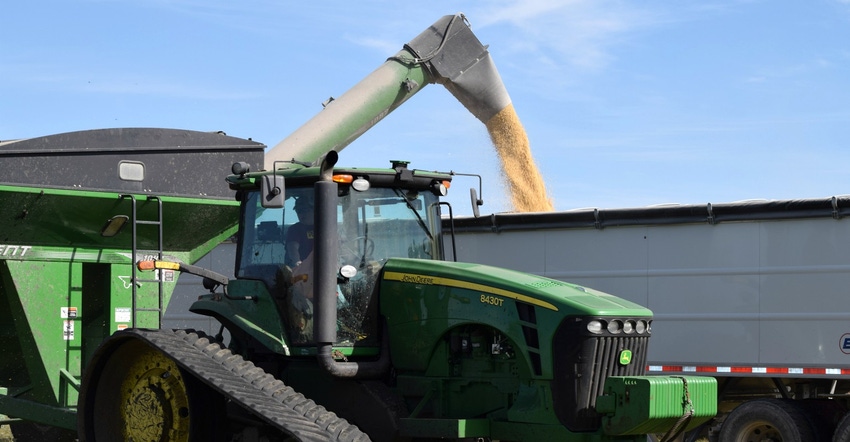November 10, 2020

We will remember 2020 for wanting it to be over, and we are getting there. “On our farm we finished harvesting corn and soybeans last week,” says Linn County farmer Joe Jedlicka. “There are a lot of things that get done on a farm after the combine is parked for the final time, and it has been a nearly ideal fall to get some of those things done.”
Jedlicka and his son are now busy applying anhydrous ammonia, hauling manure and planting cover crops. “This has been a year of weather challenges, marketing challenges and challenges brough on by the COVID-19 pandemic. We are always thankful to be done safely and to be thinking about plans for next year,” he says.
“We were fortunate to have a stretch of unseasonably warm and dry conditions last week across Iowa, which allowed many farmers to wrap up their 2020 harvest earlier than normal,” says Iowa Secretary of Agriculture Mike Naig. “Based on the latest forecast, we anticipate a shift to more seasonal weather conditions this week, with the weather turning cooler and wetter for the next several days.”
The complete weekly Iowa Crop Progress and Condition Report is available on USDA’s site at nass.usda.gov/ia.
Crop report
Warmer-than-normal temperatures and no precipitation allowed Iowa farmers 6.6 days suitable for fieldwork during the week ending Nov. 8, according to USDA’s National Ag Statistics Service. Fieldwork activities again included harvesting corn and soybeans, baling corn stalks, applying fertilizer and manure, and performing tillage.
Topsoil moisture condition rated 16% very short, 36% short, 48% adequate and 0% surplus. Subsoil moisture condition rated 23% very short, 36% short, 41% adequate and 0% surplus.
Only 6% of Iowa’s corn for grain crop remains to be harvested, almost four weeks ahead of last year and over two weeks ahead of the five-year average. Statewide, the moisture content of field corn being harvested for grain remained at 15%. Farmers in northwest, north-central and west-central Iowa have less than 5% of their corn for grain remaining to be harvested, while farmers in south-central Iowa still have over 15% to be harvested.
Only 2% of Iowa’s soybean crop remains to be harvested, almost three weeks ahead of last year and 10 days ahead of average. Farmers in most of Iowa have only scattered fields left to harvest. Livestock producers continue to allow cattle to graze cornstalks.
Weather summary
The first week of November brought unseasonably warm conditions across Iowa, reports Justin Glisan, state climatologist at the Iowa Department of Agriculture. In northwest Iowa, temperatures between 10 and 18 degrees F above normal were reported.
The statewide average temperature was 54.2 degrees, 13.4 degrees above normal. This reporting period was also the driest experienced across Iowa since the week ending at 7 a.m. Sept. 20, as no measurable precipitation fell statewide.
While the normal statewide weekly average precipitation is 0.53 inch, no National Weather Service co-op stations in Iowa reported measurable totals for the seven-day period ending Nov. 8. Shenandoah (Page County) reported the week’s high temperature of 81 degrees on Nov. 3, which is 24 degrees above normal. Elkader (Clayton County) and Fayette (Fayette County) reported the week’s low temperature of 15 degrees on Nov. 2, on average 17 degrees below normal. Four-inch soil temperatures as of Nov. 8 were generally in the upper 40s in eastern Iowa and mid-50s in western Iowa.
U.S. harvest nears end
As of Nov. 8, USDA surveys showed 91% of the U.S. corn crop for 2020 was harvested, versus an 80% five-year average for that date. In Illinois, 95% of this fall’s crop has been harvested. USDA now rates the Nebraska corn harvest as 93% complete. Iowa’s corn crop, as of Nov. 8 is 94% done. On the other side of the picture, Ohio farmers are only 64% finished, versus a 76% five-year average.
For soybeans nationally, 92% of the U.S. soybean crop for 2020 had been harvested as of Nov. 8, which is above the 90% five-year average.
About the Author(s)
You May Also Like






